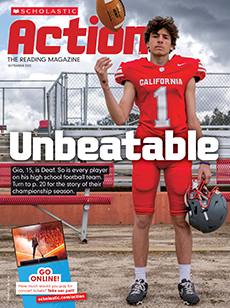Explore morphology with the prefix mis-.
After reading the article, direct students’ attention to the word misunderstanding in the vocabulary box. Point out that the word begins with the prefix mis-. Without the prefix, the word is just understanding. When you add mis-, you get a word that means a bad or wrong understanding.
Let students know that mis- means something is being done badly or wrong. Show them the following examples of words that start with mis-. Challenge them to use each word in a sentence.
- misbehave
- miscount
- misquote
- misspell
- misuse
Finally, have students reinforce their understanding of mis- and other prefixes with our fun interactive quiz “What’s That Prefix?”
Looking for more ELL support? Download our full lesson plan and scroll to p. 5 to find questions that will help your ELLs respond to the text at the level that’s right for them.
